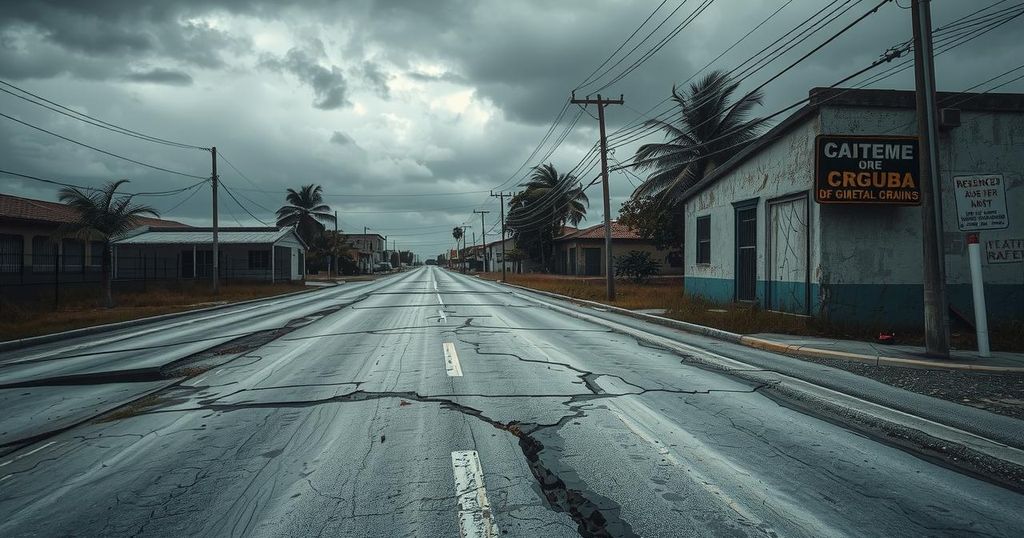Cuba Sees Spike in Traffic Fatalities Despite Fewer Accidents in Early 2025

Traffic accidents in Cuba have decreased in the first quarter of 2025, but fatalities rose significantly—up to 173 from 146 last year. Key provinces such as Havana and Ciego de Ávila report the most fatalities. The government emphasizes human error while neglecting deeper structural issues like poor roads and vehicle conditions. A work system is being implemented for road maintenance, but its effectiveness is still uncertain.
Cuba is grappling with a troubling rise in traffic accident fatalities in the first quarter of 2025, even as overall incidents on the roads decreased. According to data released by Eduardo Rodríguez Dávila, the Minister of Transport, the number of accidents fell to 1,738—144 fewer than in the same timeframe last year. However, fatalities rose alarmingly from 146 to 173, an increase of 27 deaths that spotlighted a deteriorating safety situation on the Cuban roads.
The stark contrast was particularly evident in March, where Rodrigues noted that, “this increase in deaths was particularly emphasized.” The provinces seeing the most significant uptick in accidents included Villa Clara, Cienfuegos, Granma, Sancti Spíritus, and Las Tunas, while Havana, Ciego de Ávila, Camagüey, Villa Clara, and Granma reported higher fatalities. A concerning trend is now visible in the central regions, indicating a pressing need for targeted interventions.
In the face of these statistics, the report reveals that injury rates also decreased, with 1,514 individuals injured—87 fewer than in the previous year. However, the overall situation is still grave, and Minister Rodríguez pointed to the importance of this data for fine-tuning preventive measures. He poignantly emphasized that “anything we do in that regard is insufficient, as a family never remains the same after losing one of its members in an accident that could have been prevented.”
Despite implementing a variety of control measures, road accidents in Cuba have remained a persistent issue. The government has attributed many of these incidents to human error, sidestepping the deeper structural issues at play, such as road conditions, insufficient signage, and a crumbling public transportation system that force many into unsafe alternatives.
A report from the Specialized Transit Body of the General Directorate of the National Revolutionary Police (PNR) had earlier indicated that driver negligence is the leading cause of traffic accidents, a point echoed by the government. Last year’s assessments highlighted the lack of attention given to vehicle control, disregard for right of way, and speeding as frequent contributors to road incidents. Additionally, both traffic violations and the consumption of alcohol were cited as recurring problems.
The government acknowledges the hazardous state of Cuba’s transport infrastructure, with 75% of roads and highways classified as fair to poor. This decrepitude, alongside outdated vehicles still in operation, exacerbates the situation. The Minister has pointed out that specific roads, especially in more remote and mountainous areas, require thorough repair efforts—yet the necessary funding and equipment for such initiatives are woefully lacking.
In addressing these challenges, the government has proposed a strategy aimed at road maintenance, involving a potential restructuring of management boards and collaborative projects with universities to innovate solutions to these pressing road issues. Yet, many question whether these measures will be sufficient as the threat of fatal accidents looms large in the current climate.
In summary, while Cuba has seen a decrease in traffic accidents in early 2025, the state has reported a troubling rise in fatalities. The government’s focus on human factors as the primary cause reflects a tendency to overlook systemic issues such as deteriorating infrastructure and inadequate vehicle maintenance. A multi-faceted strategy for addressing these dangers is suggested, yet whether this will effectively curb the fatalities remains to be seen.
Original Source: en.cibercuba.com








